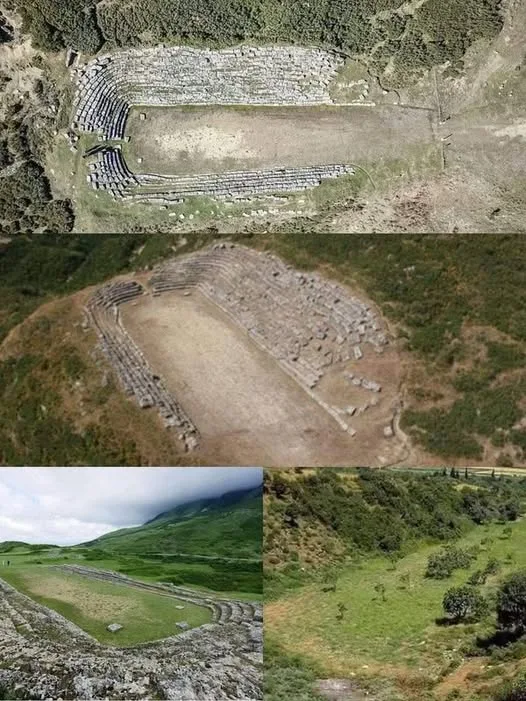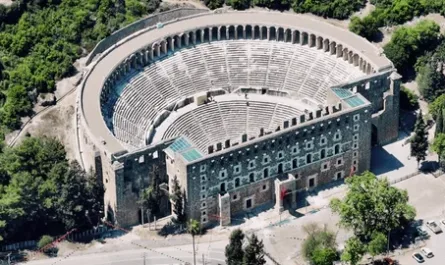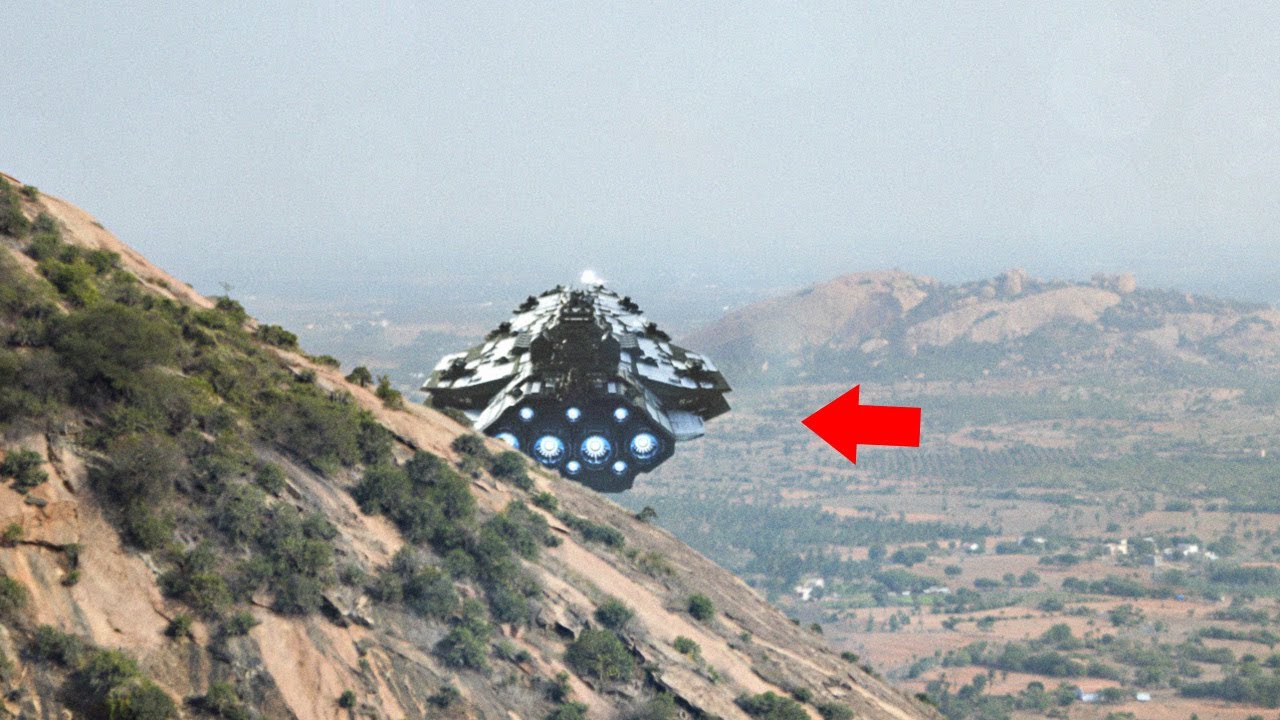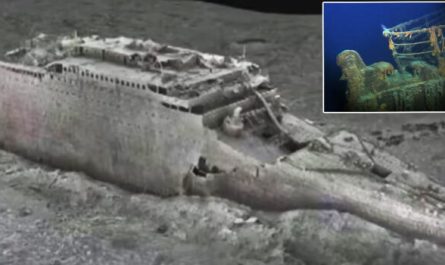Meta Description: Journey off the beaten path in Albania to discover the Hellenistic Stadium of Amantia, where 4,000 spectators once cheered. Uncover the story of this ancient athletic arena and the powerful Illyrian city that built it.

When you think of ancient stadiums, your mind likely races to the colossal remains of Rome’s Circus Maximus or the hallowed track of Olympia in Greece. But tucked away on a dramatic mountainside in modern-day Albania lies a lesser-known, yet profoundly significant, treasure: the Stadium of Amantia.
This isn’t just a pile of old stones. It’s a time capsule from the 3rd century BC, a bold statement carved into the landscape by a powerful local tribe striving to claim its place in the civilized Hellenistic world. Join us as we explore this breathtaking archaeological park.
The City on the Hill: A Strategic Power
Long before the stadium’s first race, the city of Amantia was a formidable stronghold. Perched over 600 meters above sea level in what was then southern Illyria/northern Epirus, its location was chosen for defense and dominance. From its acropolis, the Amantes tribe could control the vital trade routes between the coast and the interior.
The city walls, built with massive, finely cut ashlar blocks, still impress visitors today. They whisper of a people who were wealthy, organized, and fiercely independent. By the 3rd century BC, having secured their power, they turned their attention to something equally important: cultivating a cultural identity.
More Than a Race Track: A Symbol of Identity
The decision to build a stadium was deeply symbolic. In the ancient Greek world, athletic competitions were not mere entertainment; they were sacred events held in honor of gods like Zeus. They involved music, poetry, and religious rites, and were a core marker of Hellenic culture.
By constructing their own stadium, the leaders of Amantia were making a clear declaration: “We are not just a tribal fortress; we are a polis, a civilized city-state, part of the wider Greek world.” This was a strategic move to elevate their status among their powerful Greek neighbors and rivals, like the nearby colony of Apollonia.
Walking in the Footsteps of Athletes: The Stadium’s Design
Stepping into the stadium today, you can still feel its former energy. Its design is a classic example of Hellenistic engineering:
-
The Track: The packed-earth running track is about 60 meters long and 12.5 meters wide—shorter than a standard Greek stade, but perfectly adapted to the mountainous terrain.
-
The Seating: The stone seats are arranged in an extended horseshoe shape, following the natural slope of the hill. There were 17 rows on the higher side (dug into the slope) and 8 on the lower (built up), providing seating for roughly 4,000 spectators—a huge number for the time, suggesting this was a major regional event center.
-
The View: Imagine the scene: athletes competing in footraces, wrestling, or discus, with the stunning backdrop of the Vlorë valley unfolding below. The spectacle was as much about civic pride as it was about sport.
Beyond the Stadium: Exploring the Rest of Amantia
While the stadium is the headline act, the rest of the archaeological park is equally compelling. As you wander, you’ll find:
-
The mighty Acropolis walls, a testament to Illyrian military architecture.
-
The remains of a Temple dedicated to Aphrodite, pointing to the city’s religious life.
-
A beautifully preserved Hellenistic tomb, offering a glimpse into burial customs.
-
The city’s Bouleuterion (council house), where the city’s affairs were debated.
Planning Your Visit to Amantia
Getting There: Amantia is located near the village of Ploçë in Vlorë County, southern Albania. It’s best reached by car. The drive from the coastal city of Vlorë offers spectacular views.
The Experience: Unlike the more popular sites of Butrint or Apollonia, Amantia feels raw and undiscovered. You’ll likely have the ruins mostly to yourself, allowing for a truly contemplative experience. Wear good shoes, as the terrain is rocky and steep.
Combine With: Pair your trip with a visit to the nearby Narta Lagoon or the beaches of the Albanian Riviera for a perfect blend of history and nature.
Final Thoughts
The Stadium of Amantia is more than a ruin; it’s a narrative etched in stone. It tells the story of a people at a cultural crossroads, embracing Greek ideals while retaining their Illyrian strength. It’s a place where you can stand alone, listen to the wind, and almost hear the ghost of an announcer calling the start of a race, over two thousand years ago.
For any history enthusiast looking to venture beyond the guidebooks, Amantia is an essential and unforgettable stop.





